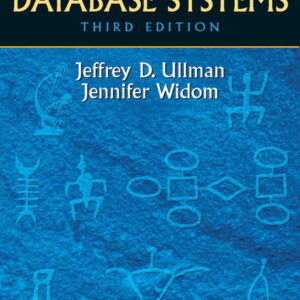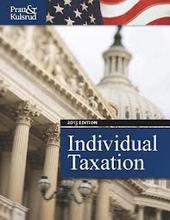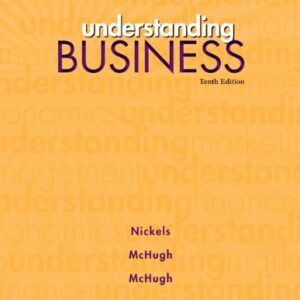Introduction to Management Accounting Horngren 16th Edition Solutions Manual
$35.00
Introduction to Management Accounting Horngren 16th Edition Solutions Manual
Introduction to Management Accounting
Introduction to Management Accounting Horngren Sundem Schatzberg
Introduction to Management Accounting Horngren Sundem Schatzberg 16th
Introduction to Management Accounting Horngren Sundem Schatzberg 16th Solutions Manual
Introduction to Management Accounting Horngren 16th Edition Solutions Manual
*** YOU ARE BUYING the Solutions Manual ***
Name: Introduction to Management Accounting
Author: Horngren Sundem Schatzberg
Edition: 16th
Type: Solutions Manual
–
–
If you have any questions, please feel free to contact us. Our response is the fastest. All questions will always be answered in 6 hours., most of the time within 30mins
We also faced similar difficulities when we were students, and we understand how you feel.
But now, with the Introduction to Management Accounting 16th Solutions Manual, you will be able to
* Anticipate the type of the questions that will appear in your exam.
* Reduces the hassle and stress of your student life.
* Improve your studying and also get a better grade!
* Get prepared for examination questions.
* Can save you time and help you understand the material.
This is the quality of service we are providing and we hope to be your helper.
Solutions Manual is accurate.
Prepare to receive your Introduction to Management Accounting 16th Solutions Manual in the next moment.
If you have any questions, or would like a receive a sample chapter before your purchase, please contact us at [email protected]
Introduction to Management Accounting
Introduction to Management Accounting Horngren Sundem Schatzberg
Introduction to Management Accounting Horngren Sundem Schatzberg 16th
Introduction to Management Accounting Horngren Sundem Schatzberg 16th Solutions Manual
Introduction to Management Accounting Horngren 16th Edition Solutions Manual
CHAPTER 1
COVERAGE OF LEARNING OBJECTIVES
|
LEARNING OBJECTIVE |
FUNDA-
MENTAL ASSIGN-MENT MATERIAL |
CRITICAL THINKING
EXERCISES AND EXERCISES |
PROBLEMS |
CASES, EXCEL,
COLLAB., & INTERNET EXERCISES |
| LO1: Explain why accounting is essential for decision makers and managers. | 30, 31 | 52, 55 | ||
| LO2: Describe the major users and uses of accounting information. | A1, B1 | 28, 29, 33 | 39, 40, 42 | 55 |
| LO3: Explain the role of budgets and performance reports in planning and control. | A2, B2 | 32 | 45 | 53 |
| LO4: Describe the cost-benefit and behavioral issues involved in designing an accounting system. | 41, 43 | |||
| LO5: Discuss the role accountants play in the company’s value chain functions. | A1, B1 | 30, 31, 34, 35, 36 | 39, 42, 44, 46 | |
| LO6: Identify current trends in management accounting. | 54 | |||
| LO7: Explain why ethics and standards of ethical conduct are important to accountants. | A3, B3 | 37, 38 | 47, 48, 49 | 51, 52, 55 |
CHAPTER 1
Managerial Accounting, the Business Organization, and Professional Ethics
1-A1 (10-15 min.)
Information is often useful for more than one function, so the following classifications for each activity are not definitive but serve as a starting point for discussion:
- Scorekeeping. A depreciation schedule is used in preparing financial statements to report the results of activities.
- Problem solving. Helps a manager assess the impact of a purchase decision.
- Scorekeeping. Reports on the results of an operation. Could also be attention directing if scrap is an area that might require management attention.
- Attention directing. Focuses attention on areas that need attention.
- Attention directing. Helps managers learn about the information contained in a performance report.
- Scorekeeping. The statement reports what has happened. Could also be attention directing if the report highlights a problem or issue.
- Problem solving. Assuming the cost comparison is to help the manager decide between two alternatives, this is problem solving.
- Attention directing. Variances point out areas where results differ from expectations. Interpreting them directs attention to possible causes of the differences.
- Problem solving. Aids a decision about where to make parts.
- Attention directing and problem solving. Budgeting involves making decisions about planned activities — hence, aiding problem solving. Budgets also direct attention to areas of opportunity or concern — hence, directing attention. Reporting against the budget also has a scorekeeping dimension.
1-A2 (15-20 min.)
- Budgeted Actual Deviations
Amounts Amounts or Variances
Room rental $ 170 $ 170 $ 0
Food 660 875 215U
Entertainment 570 570 0
Decorations 210 270 60U
Total $1,610 $1,885 $275U
- Because of the management by exception rule, room rental and entertainment require no explanation. The actual expenditure for food exceeded the budget by $215. Of this $215, $132 is explained by attendance of 16 persons more than budgeted (the budget of $660/80 = $8.25 per person for food and 16 x $8.25 = $132) and the remaining $83 ($215 – $132) is explained by expenditures above $8.25 per person.
Actual expenditures for decorations were $60 more than the budget. The decorations committee should be asked for an explanation of the excess expenditures.
1-A3 (10 min.)
All of the situations raise possibilities for violation of the integrity standard. In addition, the manager in each situation must address an additional ethical standard:
- The General Mills manager must respect the confidentiality standard. He or she should not disclose any information about the new cereal.
- Felix must address his level of competence for the assignment. If his supervisor knows his level of expertise and wants an analysis from a “layperson” point of view, he should do it. However, if the supervisor expects an expert analysis, Felix must disclose his lack of competence.
- The credibility standard should cause Mary Sue to decline to omit the information from the budget. It is relevant information, and its omission may mislead readers of the budget.
1-B1 (15-20 min.)
Information is often useful for more than one function, so the following classifications for each activity are not definitive but serve as a starting point for discussion:
- Problem solving. Provides information for deciding between two alternative courses of action.
- Scorekeeping. Recording what has happened. If amounts are compared with expectations, this could also serve an attention-directing function.
- Problem solving. Helps a manager decide among alternatives.
- Attention directing. Directs attention to the use of overtime labor. Also scorekeeping.
- Problem solving. Provides information to managers for deciding whether to move corporate headquarters.
- Attention directing. Directs attention to why nursing costs increased.
- Attention directing. Directs attention to areas where actual results differed from the budget.
- Problem solving. Helps the vice-president decide which course of action is best.
- Problem solving. Produces information to help the marketing department make a decision about a marketing campaign.
- Scorekeeping. Records actual overtime costs. If results are compared with expectations, also attention directing.
- Attention directing. Directs attention to stores with either high or low ratios of advertising expenses to sales.
- Attention directing. Directs attention to causes of returns of the drug.
- Attention directing or problem solving, depending on the use of the schedule. If it is to identify areas of high fuel usage it is attention directing. If it is to plan for purchases of fuel, it is problem solving.
- Scorekeeping. Records items needed for financial statements.
Be the first to review “Introduction to Management Accounting Horngren 16th Edition Solutions Manual” Cancel reply
Related products
Solution Manual
Advanced Financial Accounting Baker Christensen Cottrell 9th Edition Solutions Manual
Solution Manual












Reviews
There are no reviews yet.